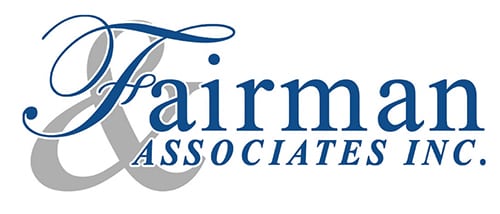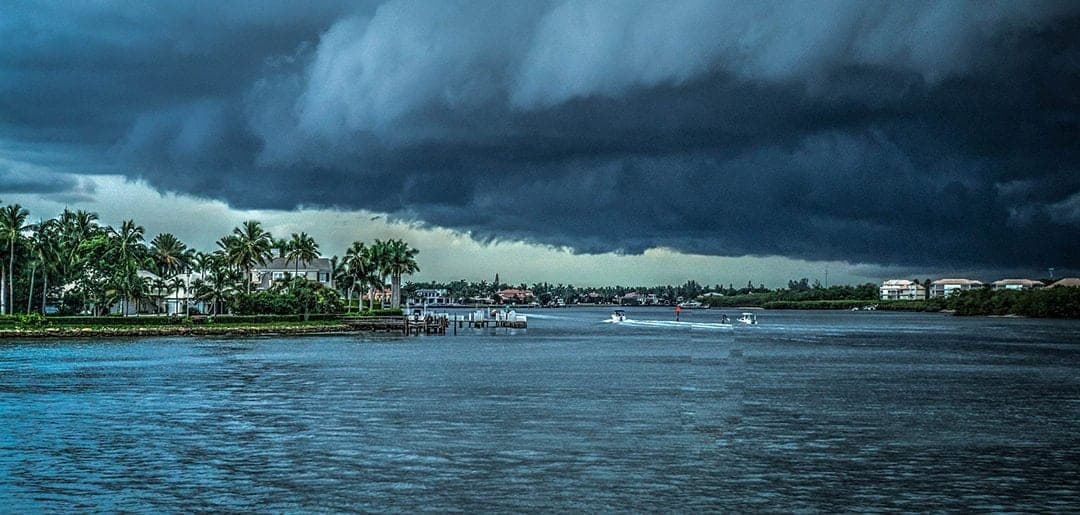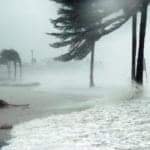Dangers from a major storm don’t end when the storm passes. Flooding, downed electric lines, and debris can all cause problems. Precautions need to be taken to stay safe when restoring your property.
First, remember that after a storm, the area remains a hazard zone until officials announce otherwise. Studies suggest that trying to restore property ahead of official clearance often results in injuries or death from drowning, loose debris, downed power lines, or even displaced unfriendly reptiles. If you can, hire a security guard or police officer—not an employee—to protect the property from vandalism.
Make sure you have official identification handy when officials green light a return to your property, as proof of connection to the area may be required, particularly if your property is located on one of the barrier islands. For complete details on acceptable identification for access to properties under management, check with your town hall.
When you first return to the property, wear long sleeves and pants, apply a repellent to deter wildlife, and bring drinking water and shade to prevent sunstroke. Inspect all gas, water, electrical and sewer lines for damage. If you smell gas, immediately alert the gas company. Open all windows and stay outside until the gas company gives an all clear. Be sure to avoid matches, lighters, and sparks while waiting. Notify the water company of any breaks in the line and prohibit the use of tap water on the property until repairs are completed. If the property flooded, an electrician must perform an inspection before the breakers are switched on. Lastly, if the sewer lines have been compromised, do not use the toilets.
Shut down the generator as soon as possible. Do not fill it with fuel until it has sufficiently cooled down; avoid the exhaust pipe as it can cause third-degree burns. Follow all safety procedures for refueling the generator as prescribed by the manufacturer. Do not run a power generator indoors, as carbon monoxide can poison the air. Never plug a generator into a standard wall outlet to avoid “back feeding” from the generator, which can electrocute utility workers and create a fire hazard as well. Lastly, do not hack into the building’s emergency circuits by attaching three-way connectors because of the high risk of fire.
Next, begin the removal of storm debris. Remember to only do what you can do safely; for everything else, call in professionals. Do not use a chain saw on any branches above your head to avoid injury. Follow instructions from the city and your waste removal company on proper disposal of debris. Immediately drain any standing water to prevent mosquitos. Document this process as your city or insurance may have a policy for these situations.
Document any damage thoroughly with photos or videos. Place these in a file together with pictures of the building or area prior to the storm. Put any receipts or invoices for repairs, damage assessments or replacements associated with an insurance claim in the file as well. Note: DO NOT repair any storm damage unless it poses a safety risk. Unapproved repairs may invalidate your insurance coverage. Create a list of items to be added or replaced due to damage. Finally, review insurance policies to understand what they will and will not cover.
Any place water entered could harbor mold growth or spores. Inspect the building thoroughly. Liberty Mutual recommends removing all wet carpet, padding, wallboard and insulation to limit mold risk. Take photos to document water damage and put pieces of any moldy carpet or wallboard in plastic bags to show insurance claims adjusters. Reduce the risk of greater damage by drying subflooring, beams, cabinets and other surfaces with fans, heaters, dehumidifiers and/or air conditioning.
Do not replace insulation or replace flooring until the studs and sheathing has less than 14% moisture by weight, as determined by a moisture meter. Check ceilings and attics for moisture damage, too. Cover damaged areas of the roof with a waterproof tarp until repairs can be made. Shore up the structure as necessary.
With luck, you’ll find minimal damage after the storm, but if a hurricane did affect your property, you’ll have taken the steps necessary to file insurance claims and restore it to good condition by following the steps outlined in this three-part blog series.
Special thanks to Lorraine Megdanis of Presentation Dynamics for her useful materials on hurricane preparedness, which provided many of the points mentioned in these blogs.
About the Author

Susan Dubbin
Susan Dubbin, a Licensed Real Estate Associate and Licensed Community Association Manager, joined Fairman & Associates, Inc. as a Property Manager in 2006. She has worked in the property management industry for fifteen years. She is currently managing eight properties in Boca Raton and works closely with her owners and tenants to ensure optimum maintenance of the properties and tenant satisfaction.





Great article. But you left out at least one really important issue. After the storm, building materials and qualified contractors will become scarce really quickly as the demand for materials and contractors will almost instantly exceed supply. This circumstance leaves vulnerable property owners whose personal property, equipment and real estate are now at risk in desperate circumstances. It is under such conditions that the unlicensed, uninsured fraudster will seek to take advantage of desperate and vulnerable property owners. Educating yourself as to how to recognize these crooks is one of the most important preparations you can make.